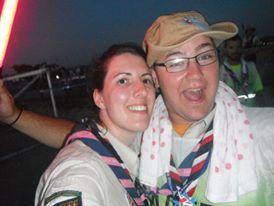After last week’s post, I was thinking about how to get this blog back up and running again, what to talk about, or more importantly, what order to talk about things in. I’ve got quite a lot I’d like to talk about, in specific Moot terms, based on some observations of the last two, but some of it I want to have more information from the organisers or the contingent before I give my unsolicited opinion.
The topic of the next Moot Monday, is for example, travel – which is a post I’d started working on last week, so I’d like to see what the contingent have to say before I give my tuppence worth. They may even cover everything I want to say making that post totally redundant. That said, I’m sure I’ll find things to talk about…
The last post, the first from this series, was a stream of consciousness about who I am, what I hope this blog will be and why I’m writing. I hope it was a good introduction and it has piqued your interest in what I have to say. But where to go from there?
I suppose, as the song goes, let’s start at the very beginning. It is after all a very good place to start. So, with that out of the way, “What is a World Scout Moot”?
The simple answer is it very much depends on who you ask. Other questions in this category are “how long is a piece of string”, “is the dress blue or gold?” or or “how many unpainted figures *is* too many?”
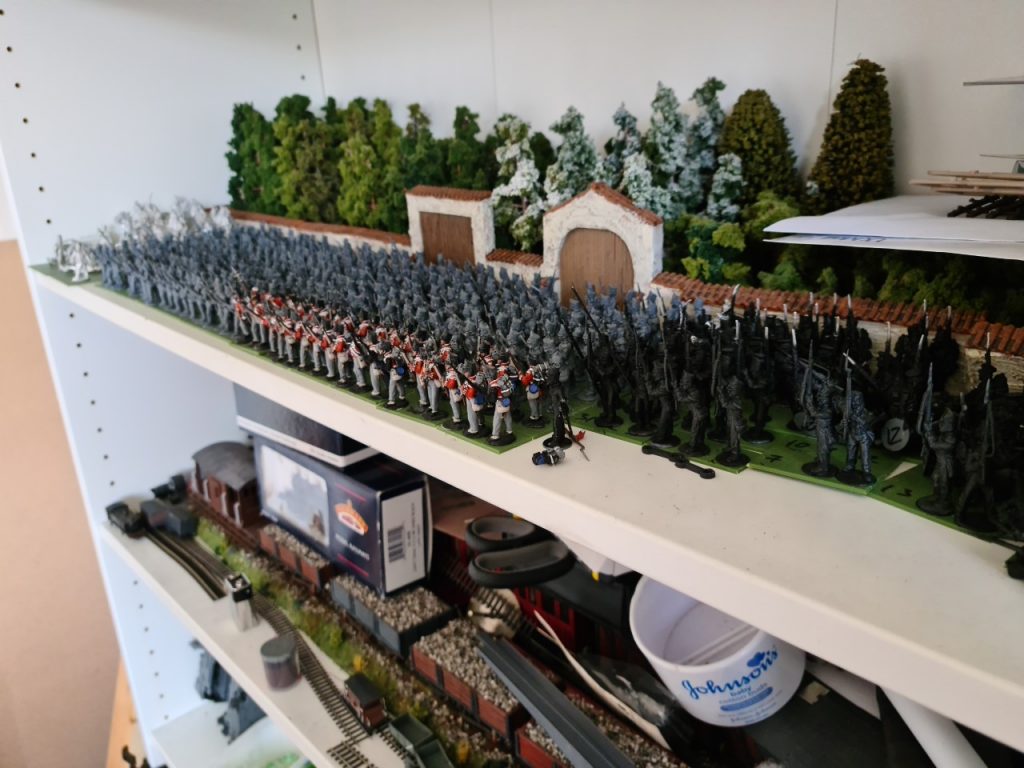
The reality is a Moot is many, many different things – in fact I would say it’s something unique to every single person that goes. For some it’s an adventure holiday, for others a life-changing experience that helps define the rest of their lives. For some it’s two weeks in a field, for others it is a catalyst for change.
From this post, and others, I think you can guess where I lay on that particular spectrum. But before I gush some more about International Scouting, it’s worth taking us back to the very start.
The World Scout Moot is one of three major recurring events that are run on behalf of the World Organization of the Scout Movement. The World Scout Jamborees are probably the biggest and best known, organised for units of 36 Young People 14-17 and four Leaders, with an International Service Team, or IST, of 18+ year old’s. These happen on a rolling four year basis, the last in the USA in 2019 and the next in South Korea in 2023.
There is then the World Scout Youth Forum/World Scout Conference which, having never been to one, I understand to be more about the governance of WOSM and the activities of the Global parent organisation. It happens every three years, and a big deal is made of it by WOSM and the six delegates from each Nation who attend. There is information on this event if you look around for it, but it’s not my cup of tea so I’m not going to dwell.
The final event is the World Scout Moot. It’s worth noting that Roverway is a European Region event which kinda-sorta falls under the WOSM Umbrella, but isn’t one of the “Big Three”.
In terms of its structure, the Moots have become an awful lot like the Roverways, in that you are based in a patrol and over there are two distinct parts or phases to them. In Ireland you will start the Moot on a trail, exploring part of the island with your patrol, then you’ll gather at the main site, Malahide Castle, and will continue living with your patrol for the second half of the event.
This was a similar set up (I believe, I wasn’t there – despite having a Compass role that says I was) to the last Roverway. The last Moot in Iceland worked on a similar principle, there were 11 expedition centres, and Patrols were sent to these for the first half of the Moot, then joined all together at Úlfljótsvatn – the Icelandic national Scout Centre.

Now, that’s about as much as we know at the moment. The reality is, and especially because of the “unique global situation”, a lot of the plans for the Moot aren’t set in stone. There is a good chance that they won’t be set in stone until much closer to the event, and there is a credible risk that things won’t be set in stone until we’re over there and they actually happen. It’s kinda the way of Moots.
If you are used to Jamborees, whether you were a participant or IST in America, or Japan, or whenever, wherever (we’re meant to be together…) the Moot can be a bit of a culture shock. It’s a common theme I’ve come across at the last two – something I experienced a bit myself in Canada.
A Jamboree with 35-50,000+ people attending is a spectacle like no other. Trust me I’ve done four and every opening or closing ceremony I’ve been to blows me away. Another tale for another day, but in Japan, I was security standing between the Stage and the Crowd and I got to see (almost) all the nations of the World laid out before me in peace and harmony. If this has been your experience of Internationals to date, even if you’re used to event like EIJ which attract 10,000ish to the site, your first impression of the Moot will be that it is much smaller.
And well, yeah it is.
But, for me (at least) that’s part of the charm. If I think back to the Jamboree in 2007, I didn’t *really* make many friends outside of my Unit. The sheer scale of the event made it hard to find folk, never mind interact with them in a meaningful manner. I compare that experience to the Moot 2013 where there was only 2,000 or so of us on site, I made friends not just from my patrol but outside it as well.
It also means, from an IST perspective, a lot of the layers of failure mode protection and redundancy that exist at a Jamboree simply don’t at a Moot. In Iceland I ended up in charge of security for Reykjavik. I had a team of seven. In Japan, my security team of seven was one of dozens – I think there was nearly 1500 folk on security. Whilst Japan was a much larger event, when you’re 50% of the deployed security in the dead of night in the Capital city of a nation, knowing if anything kicks off your closest backup is either 40 miles away or asleep, the size of the event is the least of your concern.
As another example, my job back in America in 2019 was Food SWAT. We were a unit of 10 within the Food Team who answered only to the Head of Food, and responded to a big red phone and a floodlight shone into the night sky. We existed to solve problems to keep Food moving, whether those be 3am milk deliveries to go to the subcamps so folk could have breakfast, or milk in their tea, or to ride up the Mountain in a kabota with a nut free lunch because otherwise a Young Person wouldn’t be able to eat. I suspect that this isn’t a team that will exist in Ireland, or if it is, it’ll be IST cross-staffing on their “time off”.
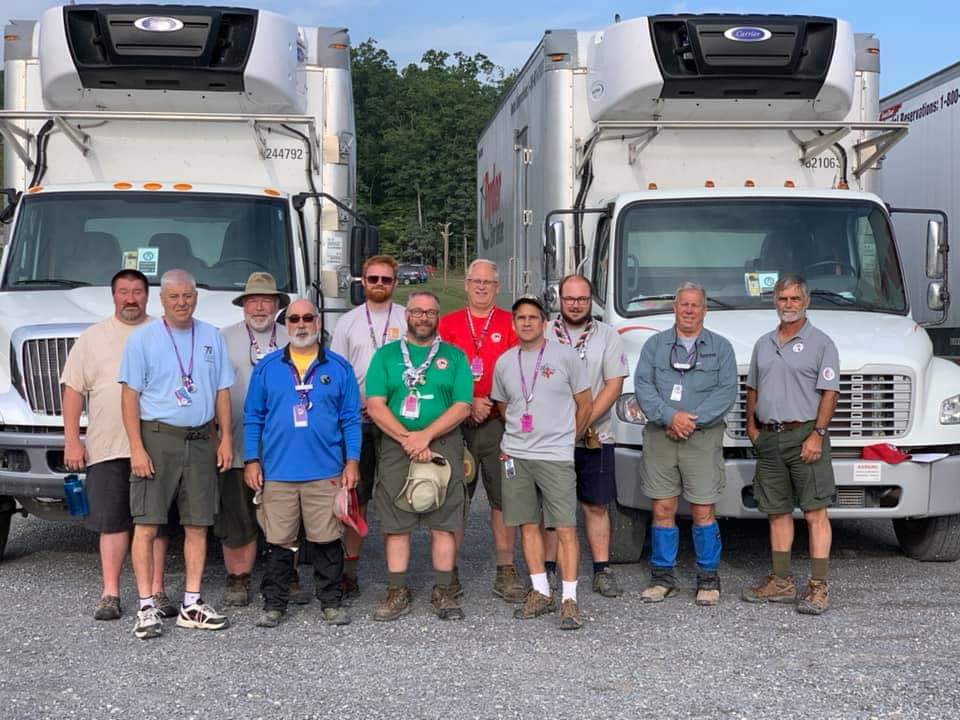
From a participants point of view this will be unlike any event you’ve done before (unless you were in Iceland as a participant, in which case it will be like one event you’ve done before…). The smallest block for a Jamboree is a Unit – 36 young people and 4 adults. At Roverway, a patrol of up to 8 (I think). All from the same country, a UK unit, a UK patrol, generally representing a geographical area or Scout County.
The patrol is the building block of the Moot, but you will be randomly assigned to an International Patrol. You will be living, cooking, eating, adventuring, relaxing with people from all around the world that you will likely only meet in the flesh at the opening ceremony. These people might not speak English as a first, second or even third language and you will need to find ways of expressing yourself and communicating with these people.
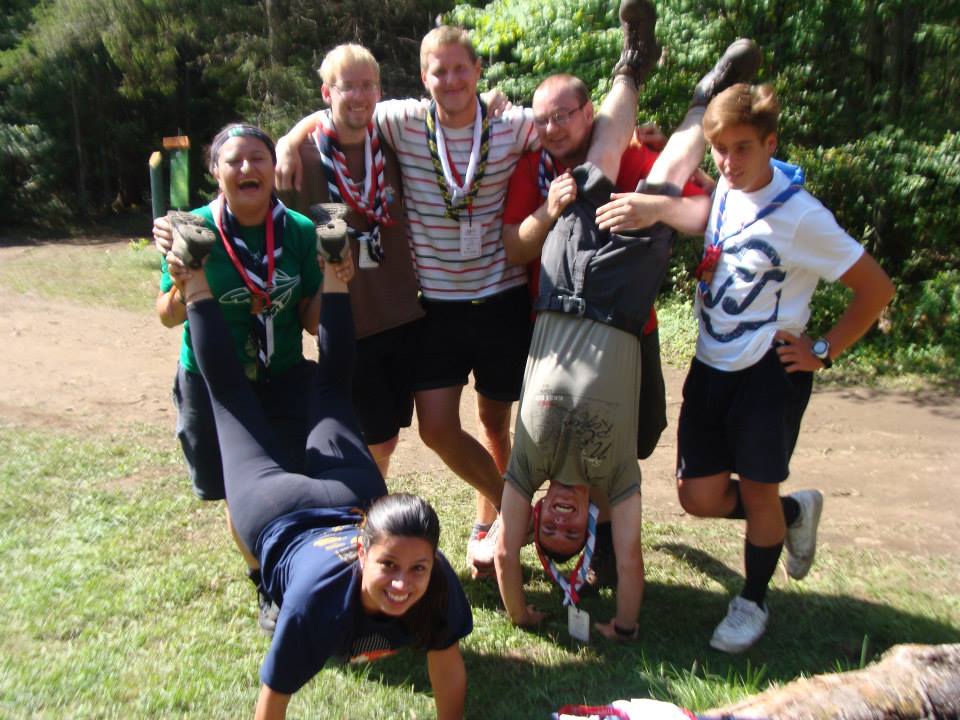
I suspect, with the size of the UK Contingent there will be at least one other person from the UK in your patrol, but there is a probability there won’t be. There is a probability you will be the only native English speaker in your patrol. If this is the case, I suspect there will be other UK, or Irish, Australian, New Zealand, Canadian or perhaps US Scouts nearby who’ll do.
In Canada, I was the only native English speaker in my patrol – and frankly that’s pushing the definition of “native English speaker” quite a bit (see later post about communication!).
I’ve grown used to being on these events and I slow down to help folk get through my thick Weegie accent and I take care to annunciate. If you’re having to do this for every conversation because your foreign language skills are somewhere between non-existent and absolutely terrible, it’s tiring. In the same way that it will be tiring for others in your patrol speaking in their second, third or fourth languages constantly.
Having another native English speaker – or someone like me – to have a conversation with is refreshing. I remember in Canada seeking out friends in my subcamp or the neighbouring ones, even the UK HQ to talk at just to be able to talk at a normal speed and have folk semi-understand me – but communication is for another post.
So, if Moots are as amazing as you say they are Martin, why are they such (relatively) small events?
Good question – answer in two parts, firstly eligibility. There are significantly more 14-17 year old’s in our Movement than there are 18-25 year old’s. A Jamboree scale event for this age range would probably suck up about 80% of the eligible folk – and I don’t think this is realistic.
With the proximity of The First Glasgow (my group) to Glasgow Uni (my old Uni… there may be a connection) we probably have a disproportionate number of Younger Leaders compared to some of the rural groups or even other Groups within Glasgow who can’t tap the student population the way we do. At the last Moot, there were six participants and one IST attending from my Group alone.
That said, of the 20 adults I have currently on the books, only three would be eligible to attend the Moot (as a participant). One is (Hi Sophie!) one isn’t because she’s Finnish and if she would be going it would be through her native contingent, and I haven’t spoken to the other one, so she might very well be!
The other side is publicity. And whilst this has been much better for this event, it wasn’t always so.
I had never heard of a Moot until 2012, and even then it was by chance. I was effectively having a Sabbatical from scouting, still a member on paper, but not actively Scouting. I was a little burned out and had fallen out of love with Scouting. Coincidently, this is also just after the last time I was a Beaver Leader – not implying correlation or causation, but I’ve never done Beavers since and I’ve been okay!
I would like, at this point in the post, to introduce you to a very good friend of mine and seasoned international traveller, Cat. Cat and I encountered each other at Freshers week 2009 at the University of Glasgow because I was wearing a “Scout and Proud” hoodie – Cat came from a Explorers/Rangers/Network unit out of Newcastle who had been the original developers of the whole “Scout and Proud” brand and recognised it from about 200m away, and charged. This was the start of a friendship that’s gone transatlantic and transpacific in the name of Scouting.
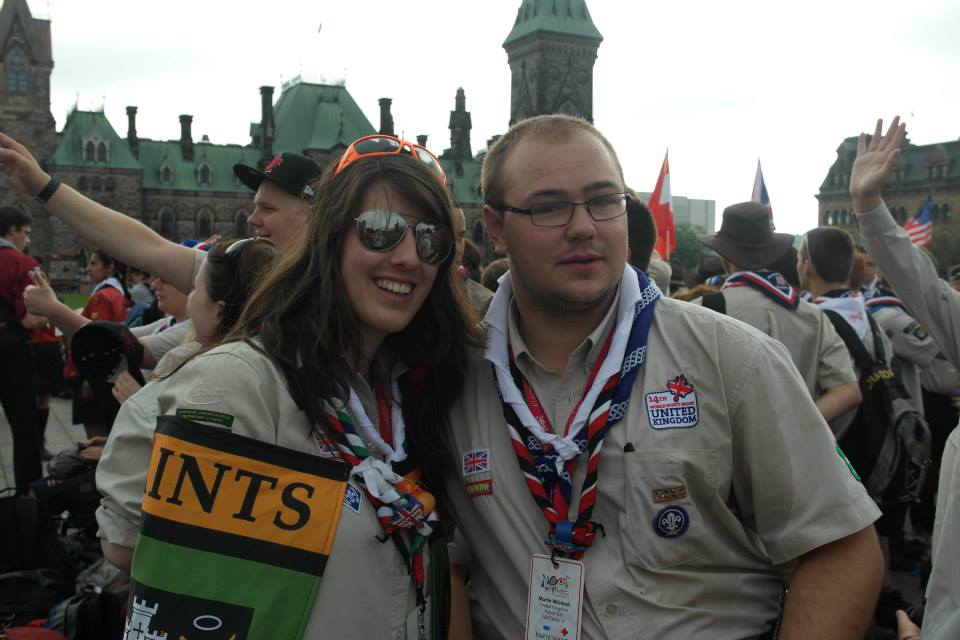
Because I’ve not had an aside for a few paragraphs – I have a lot of Scouty and Guidey friends. They are nearly all folk I have met through these events and you may come to meet some of them as they become relevant to whatever tale I’m telling. Some will be recurring, some may only appear once or twice through this narrative.
Cat had recently returned from Roverway in 2012, and had come up to Glasgow to sort stuff for the next academic year. We’d met for lunch and were sitting in the Botanic Gardens (for those who know Glasgow) in uncharacteristically beautiful weather. I don’t think I’d seen her since the tail end of the Academic year a few months previous, so we had quite a long catch up, during which she looked over at me and said “Are you going to the Moot?”
Which, to my lasting shame, I replied, “what’s a Moot?”
“Well”, she said, “It’s a bit like a Jamboree, but we’d be participants.”
It turns out, on further investigation, I would have been eligible to go to the 12th World Scout Moot in Kenya back in 2010, and I kind of kick myself that I didn’t know about it. I’ve never been to the African continent, and I think that would have been a totally unique experience. But, I don’t remember any advertisement for it, I don’t remember ever hearing it mentioned or knowing anyone who went.
“Aye?” Said I. For those who don’t know the local patter, “aye” is a perfectly valid response to anything. It can be an answer or a question, an affirmative or a negative, all dependent on tone.
“Yeah.” She replied, “They were pushing it at Roverway, a load of my patrol are going so I’ve signed up!”
I’d been to the Jamboree in 2007 as a participant and had a fantastic time. Since then I’d only ever done IST or a section/unit leadership role since 2009 when I’d turned 18. If you get a chance to read the reflective piece I wrote before the Jamboree in 2019, you will see I totally get that Scouting is at its very core a Youth Organisation, it always has been, it always shall be, and there has to be a line – that line is 25, and I’m on the wrong side of it at this point (and accelerating fast away. Did I mention I’m 30 in a few weeks?).
At that point when I didn’t know about the Roverways or Moots, I’d sort of accepted that now I was over the age of 18, my role was to attend these events as IST and work to give Young People experiences like the ones I’d had in 2007, to help deliver an event that helps them to grow, develop and discover themselves. I wasn’t particularly involved in Network or SSAGO and missed some opportunities as a result – I’d like to think I gained others, but that’s academic at this point.
But if someone turned round to me today and said “Martin, we’re making a special exception and you can go to Ireland/South Korea as a participant.” I’d snap their hand off. And effectively that’s what Cat did for me here. I could have one last throw of the dice as a Participant to an event. One last adventure where I was responsible only to myself – where I was paying not to work but to play
And that was pretty much all the encouragement I needed. I got home, had a quick flick through Scouting magazine, found the matte half page advert with a web address to a less colourful website than we have now and signed up within about 10 minutes of getting home. The rest, as they say, is history.
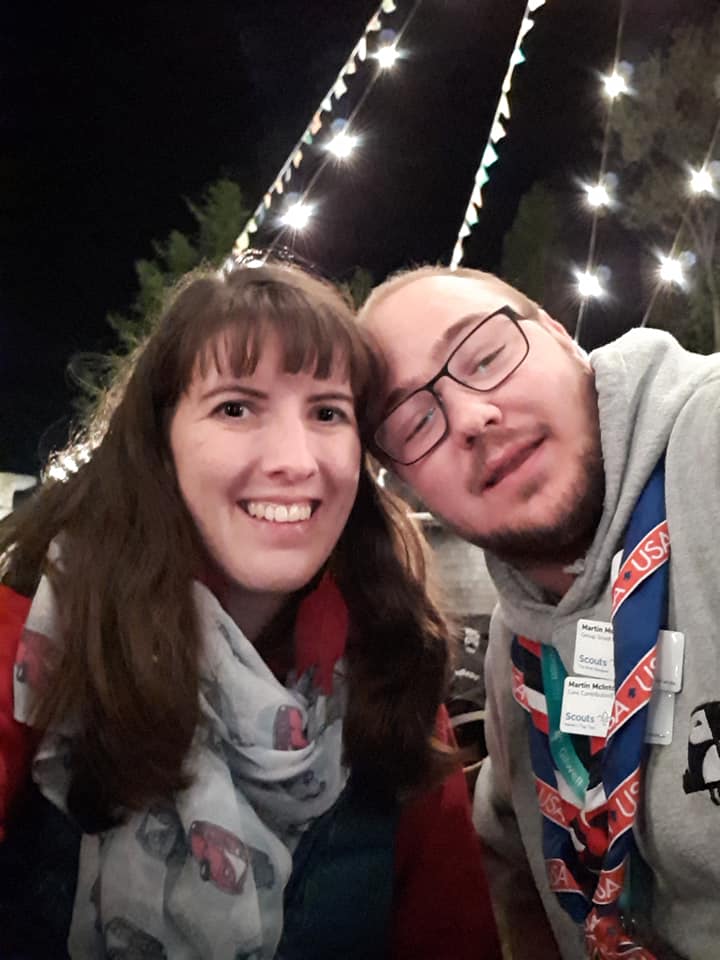
The UK Contingent to Canada, in the end, was 229 people, including 30odd IST and 4 CMT. I wasn’t just the only adult from the First Glasgow attending. I wasn’t just the only adult from Great Western District attending. I was the only adult from Clyde Region attending. There were fourteen of us, including 3 IST and no CMT, from Scotland attending. (Regions our our equivalent of Scout Counties up here) This will be the theme of later posts, but I wanted to show the scale of the event.

By Iceland in 2017, our contingent sat around the 500 mark. Almost a full quarter were IST. There were six of us from my Group attending the event, and I think a total of eight or nine from the district, and nearly a full dozen from the Region.
Our contingent to Ireland is looking like 650+, the largest contingent ever to go to a Moot from the UK and prospectively the largest single contingent to a Moot ever. I don’t know the breakdown, but from a quick Google, the event organisers are predicting 5-6,000 total attendees with 1000-1500 IST.
To put that into perspective, the 24th World Scout Jamboree held in 2019 had 47,000 Scouts attend (not including day visitors or outside contractors). The UK Contingent was nearly 5000, with about 800 IST. There were more IST in the UK Contingent to the USA than the total number of the Contingent to Ireland. There is a very real possibility that the UK contingent to the USA will be bigger than the total number of people at the Moot.
So, given we’re fast approaching 3,000 words it might be time to wrap this up. So what are my Top Tips?
First and foremost. Forget all your preconceived notions about the Moot.
Even if you’ve been to a Moot (or two, or three) before, forget what you think you know.
Every single international event is different. They are organised by different people with different ideas, knowledge, experience and expertise. The Moot in Canada and the Moot in Iceland were both Moots, but represented totally different events. If you go into Ireland, or the run up to it, thinking it’s going to be just like America, or Iceland or Japan or EIJ you’re going to hit the ground and be totally confused at what’s going on around you.
I did this in Japan. I’d done two Jamboree’s by this point, one as a participant and one as IST. So going out to Japan as IST, I thought I had the measure of the event. I thought I knew what to expect. I was wrong. From the climate to the management culture, they were very different. Go in with an open mind and it will be far better for you (just in general!)
I will talk about “The Jello Plan” at a later date, but it’s worth introducing it now. Don’t be too married to an idea of how something should be – from what your job is going to be right through to how things are going to work. I completely get that some folk need to have a plan and stick to it and when things don’t go to plan there can be severe consequences mentally or physically. But being aware of this just now and speaking to your support network on how to cope in these circumstances, now, fifteen months in advance gives you a chance to plan and prepare.
My second tip – read everything you can, from the organisers, from the Contingent – be really cheeky and have a look at the Irish contingent website, or perhaps the Australian one, but bear in mind plans change.
I’ll close with a short editorial note. This post started with a simple premise “what is a Moot?” and I thought it would be a quick and easy question to answer. But, as I started the process of writing, it became almost as long as War and Peace. I have therefore, for the sake of everyone’s tenuous grip on sanity at the moment, decided to split this up into a couple of posts. They may not be sequential, because there’s a couple of other posts in the works too.
You see, I don’t really have a plan for any of this, from the topics to the content, it’s quite organic. When I start writing, I sort of brain fart at the screen and once I’ve done that I spend a bit of time editing it and re-ordering it to something vaguely readable! My self-imposed deadline for completing this is a Monday evening at about 22:00. This gives me and my proof-readers a chance to have a look and make sure I’m communicating in something vaguely associated with the English language.
So I’ll leave it there, for now. More on this theme in a couple of weeks!



